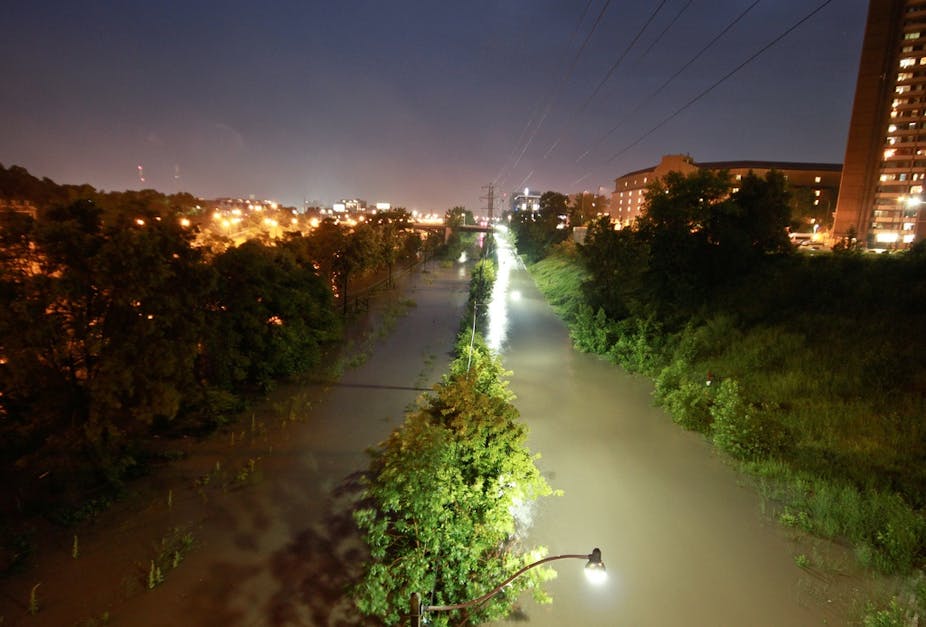For almost sixty years Hurricane Hazel has stood as the most extreme storm on recorded in City of Toronto but this week, on July 8th, a new record was set. A series of storms hit the city late in the afternoon and, in a matter of hours, dropped 126 mm, surpassing Hazel’s daily rainfall recorded of 121 mm. Flash flooding in the Don River valley caught commuters off guard and stranded an inter-city train for hours.
More than 24 hours later sections of the city subway remain closed and tens of thousand people are still without power. But what it perhaps most remarkable about this storm is how well Toronto survived it.
Lessons learned from Hazel
This week’s storm was torrential and extreme but remarkably there were no drowning-related deaths or wide-spread evacuations. In the past, Ontarians would not have survived an event of this scale so unscathed. In 1954 the destructive path of Hazel left 81 dead and 4000 families homeless. Hazel was a seminal moment in the history of flood management in Ontario and led the creation of the Toronto and Region Conservation Authority and the implementation of floodplain regulations to restrict and prevent building in floodplains.
By almost any metric - intensity, rainfall depth, wind - Hurricane Hazel vastly exceeded 100-year storm conditions so it has become the design standard for major and floodplain systems in Southern Ontario. The Land Acquisition Program implemented in 1960 after Hazel gave Conservation Authorities the ability to purchase and operate floodplain lands.
The most important outcome of this program is that re-building in high-flood risk floodplains has been prevented. In Toronto, Raymore Drive, where 36 homes were washed away during the Hurricane, is now a city park.
The legacy of Hazel has made Toronto and other Ontario municipalities much more resilient to flooding. And it is a testament to this progress that less than 24 hours after the storm, much of the city was back to work and back to daily life.

Looking forward
While the policies and actions implemented since Hurricane Hazel have improved the safety of Ontarians and the resiliency of Ontario cities there is still much more work to be done. Canada’s infrastructure is aging and urban populations are growing.
Climate change is anticipated to make severe weather more common and more destructive. And the costs of flooding continue to grow. The Canadian insurance industry pays out approximately $1.7 billion in water damage claims annually. Incredibly, this statistic is only for claims associated with basement flooding as overland flooding is not covered by Canadian insurance policies.
With so many challenges it is easy to become pessimistic. In the destructive and chaotic aftermath of a flood an ahistorical perspective can be incredibly seductive. That is why it is so important not to forget the lessons learned from Hurricane Hazel and to recognize the progress that has been made within Ontario.
In 1954, there is a high likelihood that the storm experienced this week would have washed away both lives and livelihoods. Fortunately, as a direct result of the floodplain management, flood warning and emergency preparedness Ontarians have been protected from this, the most tragic of all losses.

